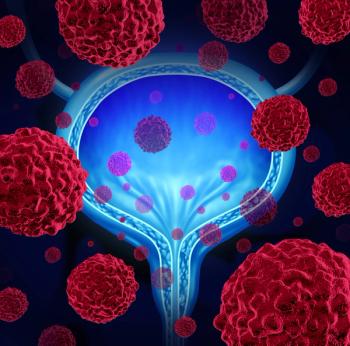
UTI Delayed Bladder Cancer Diagnosis in Medicare Population
Presentation with a urinary tract infection delayed a bladder cancer diagnosis among a population of Medicare patients, with worse delays experienced by women.
Initial presentation with a urinary tract infection significantly delayed the diagnosis of bladder cancer among a population of Medicare patients, with worse delays experienced by women, according to the
According to study author Kyle A. Richards, MD, of the department of urology at the University of Wisconsin, and colleagues, data have shown that women experience increased delay in the diagnosis of bladder cancer as compared with men. To examine this disparity further, Richards and colleagues used data from the SEER cancer registry linked with Medicare claims to determine if a delay in bladder cancer diagnosis was affected by initial symptoms by sex, and whether that had an effect on outcomes.
The researchers looked at beneficiaries aged 66 years or older diagnosed with bladder cancer between 2007 and 2009. They identified 12,195 patients (2,869 were women) with a claim for hematuria or urinary tract infection within 1 year of bladder cancer diagnosis claim.
“Both women and men initially presenting with urinary tract infection are at greatest odds of significant delays in diagnosis, adverse pathology, and risk of death from bladder cancer,” Richards and colleagues wrote in their abstract. “Symptoms of urinary tract infection in older patients might be a harbinger of bladder cancer and misdiagnosis may lead to inferior oncologic outcomes.”
Women in the cohort had significantly prolonged time from initial symptom claim to bladder cancer claim when compared with men (72.2 days vs 58.9 days; P < .001).
The researchers conducted a multinomial logistic regression model and found that pT4 pathology was significantly associated with urinary tract infection as initial diagnosis in both women (odds ratio [OR] = 2.79; 95% CI, 2.04–3.83) and men (OR = 2.08; 95% CI, 1.56–2.79).
In addition, presentation with a urinary tract infection among women was associated with an increased risk for bladder cancer death (hazard ratio [HR] = 1.72; 95% CI, 1.46–2.03) and overall mortality (HR = 1.41; 95% CI, 1.28–1.56) compared with men who presented with hematuria.
“Appropriate diagnosis and management of urinary tract infections is critical, as these data show,” Tomas L. Griebling, MD, MPH, session moderator and professor of urology at the University of Kansas Medical School, said in a prepared statement. “Specific evaluation strategies and treatment choices need to be placed in the context of each patient’s overall health and clinical condition. Clinicians should be comfortable with the essential component the evaluation and management of these conditions and target their care to the needs of the patient.”
Newsletter
Stay up to date on recent advances in the multidisciplinary approach to cancer.
































































































